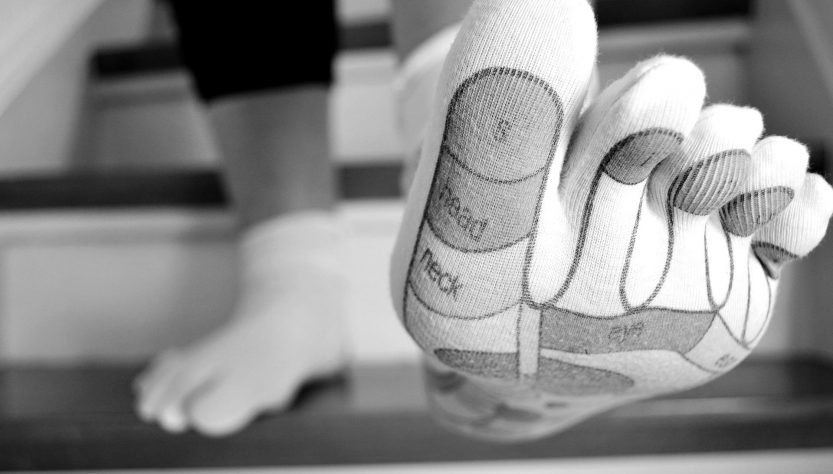
Reflexology is a form of massage that involves applying pressure to specific points on the feet. It is said to offer a variety of benefits, including reducing pain, improving circulation, and helping to detoxify the body. However, there are also some risks associated with reflexology, and it is important to be aware of these before trying this type of massage.
What Is Reflexology?
Reflexology is a type of massage that involves applying pressure to specific points on the feet. These foot pressure points are believed to correspond to different parts of the body, and stimulating them can supposedly promote healing and relaxation.
There is some scientific evidence to support the claims made about reflexology. For instance, one study found that applying pressure to the feet can relieve pain in the lower back and hips. Additionally, reflexology has been shown to be helpful for people with conditions like insomnia and anxiety.
However, it’s important to note that reflexology should not be used as a substitute for medical care. If you’re experiencing pain or other health problems, you should see a doctor or other healthcare provider.
If you’re interested in trying reflexology, there are many qualified practitioners who can provide treatments. Be sure to find someone who has experience and is certified in reflexology before booking an appointment.
The History of Reflexology
Reflexology is an alternative medicine practice that dates back to ancient Egypt. The practice involves applying pressure to specific points on the feet, hands, and ears. Reflexologists believe that these hands, ears and foot pressure points are connected to different organs and systems in the body, and that by stimulating them, they can promote health and well-being.
Reflexology was first brought to the Western world in the early 20th century by Dr. William Fitzgerald, who developed a system of zones and pressure points on the body. Fitzgerald believed that by massaging these areas, he could relieve pain and promote healing in other parts of the body.
Today, reflexology is practiced all over the world, and many people believe that it can help with a variety of conditions, including stress, headaches, digestive problems, and even chronic pain. While there is some scientific evidence to support these claims, more research is needed to confirm their effectiveness.
How Does Reflexology Work?
Reflexology is based on the belief that there are reflex points on the feet and hands that correspond to organs and systems in the body. By applying pressure to these reflex points, practitioners believe that they can promote health in the corresponding organs and systems.
There is no scientific evidence to support these claims, but many people who have tried reflexology say that it has helped them improve their overall health. If you’re interested in trying reflexology, it’s important to find a qualified practitioner who can tailor the treatment to your needs.
The Benefits of Reflexology
There are a number of benefits that have been associated with reflexology. These benefits include: improved circulation, reduced stress, improved digestion, and relief from pain. Additionally, reflexology has also been shown to be helpful in treating conditions such as anxiety, insomnia, and headaches.
The most common benefit that is associated with reflexology is improved circulation. By stimulating the nervous system, reflexology can help improve the flow of blood throughout the body. This increased blood circulation can help to provide relief for conditions such as arthritis and muscle spasms. Additionally, improved circulation can also help to reduce the risk of stroke and heart attack.
Reduced stress is another common benefit of reflexology. By increasing the flow of oxygenated blood throughout the body, reflexology can help to reduce stress levels. Additionally, by improving circulation, reflexology can also help to reduce the symptoms associated with anxiety and depression.
Improved digestion is another benefit of reflexology. By increasing the flow of oxygenated blood throughout the digestive tract, reflexology can help to improve digestion and relieve symptoms associated with constipation and diarrhea. Additionally, by improving circulation, reflexology can also help to reduce the risk of ulcers and other gastrointestinal disorders.
Relief from pain is another common benefit of reflexology. By stimulating the nervous system, reflexology can help to provide relief for conditions such as headaches, backaches, and neck pain. In addition, by increasing circulation, reflexology can also help to reduce inflammation and swelling associated with injuries and
The Risks of Reflexology
There are some risks associated with reflexology, but they are generally mild and temporary. The most common side effect is soreness in the areas that were worked on. This is usually caused by the pressure of the massage and goes away within a day or two. Other potential side effects include:
– Exhaustion
– Headache
– Dizziness
More serious risks are rare, but can include:
– Nerve damage
– Blood clots
– Infection
Reflexology foot pressure points
There are many different pressure points on the feet that can be used in reflexology. Each pressure point corresponds to a different part of the body, and stimulating these points can help to promote healing and relaxation. Different people may have different experiences with reflexology, but some common benefits include reduced stress, improved circulation, and relief from pain and tension. It is important to be aware of the risks involved in reflexology, which include over-stimulation of the pressure points and potential injury to the feet. However, when performed by a qualified practitioner, reflexology is generally safe and can be a very beneficial treatment.
Conclusion
Reflexology is an alternative therapy that involves applying pressure to specific points on the feet. This therapy, including all the foot pressure points,is said to have a variety of benefits, including reducing stress, improving circulation, and relieving pain. However, there is limited scientific evidence to support these claims. Additionally, reflexology carries some risks, such as causing bruising or pain in the feet. If you’re considering trying reflexology, be sure to consult with your healthcare provider first to ensure it’s safe for you.

